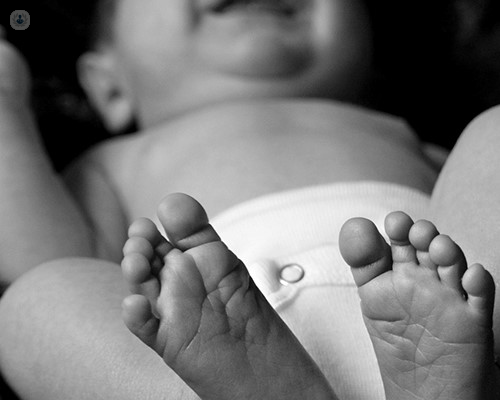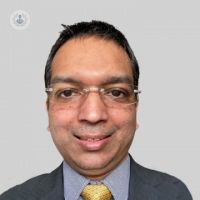Umbilical hernias in babies: Expert advice
Written in association with:An umbilical hernia is a common condition in infants that manifests as a weakness in the abdominal wall at the site of the umbilicus, allowing the bowel to protrude. This results in a noticeable bulge at the umbilicus, which tends to become more prominent when the baby cries. While this condition may cause concern for parents, it's important to understand the underlying reasons and the overall prognosis. In his latest online article, Mr Anindya Niyogi gives us his insights.

Causes of umbilical hernias in babies:
The umbilical cord, crucial for supplying oxygen and nutrients to the developing foetus, is attached to the umbilicus. Before birth, the placenta delivers essential elements to the baby through two umbilical arteries and one umbilical vein. After birth, these vessels typically close, and the umbilicus seals with scar tissue. However, in some cases, the closure process is incomplete, leading to a weakened area where the bowel can protrude.
Timing of umbilical hernia appearance:
Contrary to popular belief, babies are not born with umbilical hernias. This condition becomes apparent only after the umbilical cord naturally falls off, usually within the first few weeks of life. Parents may notice the characteristic bulge when the baby cries, as the increased intra-abdominal pressure can exacerbate the hernia's appearance.
Severity and complications:
Fortunately, umbilical hernias in infants are generally not considered serious, and complications are rare. However, there is a minimal risk of incarceration, where the protruded bowel cannot be easily pushed back into the abdomen. While this is an infrequent occurrence, it highlights the importance of monitoring the hernia and seeking medical attention if any concerning symptoms arise.
Pain and discomfort in infants:
In most cases, umbilical hernias do not cause pain or discomfort for infants. It's crucial for parents to recognise that the bulging of the hernia when the baby cries is a natural response to increased abdominal pressure and not necessarily an indication of distress related to the hernia itself.
When to worry and treatment recommendations:
Most umbilical hernias tend to resolve spontaneously as the child grows. The National Health Service (NHS) recommends considering surgical intervention around the age of 4-5 years for persisting hernias. Early surgical correction is particularly advised for cases of incarcerated hernias, where prompt medical attention is essential to avoid complications.
Mr Anindya Niyogi is an esteemed consultant paediatric surgeon. You can schedule an appointment with Mr Niyogi on his Top Doctors profile.



